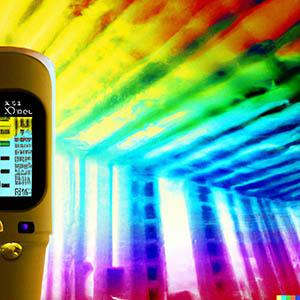Temperature-color Synesthesia: Perception beyond the Senses
Synesthesia is a rare neurological phenomenon in which a person experiences a blending of their senses. Temperature-color synesthesia is one such type, where individuals perceive colors in response to temperature changes. For example, a hot object might appear as a red or orange color, while a cold object may appear blue or green.
Although temperature-color synesthesia is not as well-known as some other types of synesthesia, it is a fascinating condition that sheds light on the incredible complexities of the human mind.

Understanding Temperature-Color Synesthesia
Temperature-color synesthesia, also known as thermal chromesthesia, is a condition in which a person's perception of temperature is linked to the perception of colors. In other words, when a person experiences a temperature change, they will also perceive a corresponding color change.
While the exact cause of temperature-color synesthesia is unknown, it is believed to be a result of the cross-activation of brain regions responsible for temperature perception and color perception. This cross-activation leads to a blending of the two senses, resulting in the perception of colors in response to temperature changes.
Temperature-color synesthesia can manifest in different ways. Some people may experience a particular color for a specific temperature range, while others may experience a color gradient, where temperature changes are perceived as a smooth transition from one color to another.
Challenges and Benefits of Temperature-Color Synesthesia
Like many other forms of synesthesia, temperature-color synesthesia can be both a blessing and a curse for those who experience it. On one hand, it can lead to a heightened perception of the world around them and provide a unique way of experiencing temperature changes.
On the other hand, temperature-color synesthesia can also be challenging to manage, particularly when it comes to navigating everyday life. For example, individuals with this condition may have difficulty accurately judging the temperature of objects or surfaces, which can be dangerous in certain situations.
Despite these challenges, temperature-color synesthesia also has the potential to offer unique benefits. For example, it has been suggested that temperature-color synesthetes may be better at certain tasks, such as identifying subtle temperature changes or detecting temperature anomalies.
Moreover, temperature-color synesthesia can also provide a source of inspiration and creativity for artists, designers, and other creatives. The unique perception of color and temperature changes can inspire new ideas and lead to innovative designs or artworks.